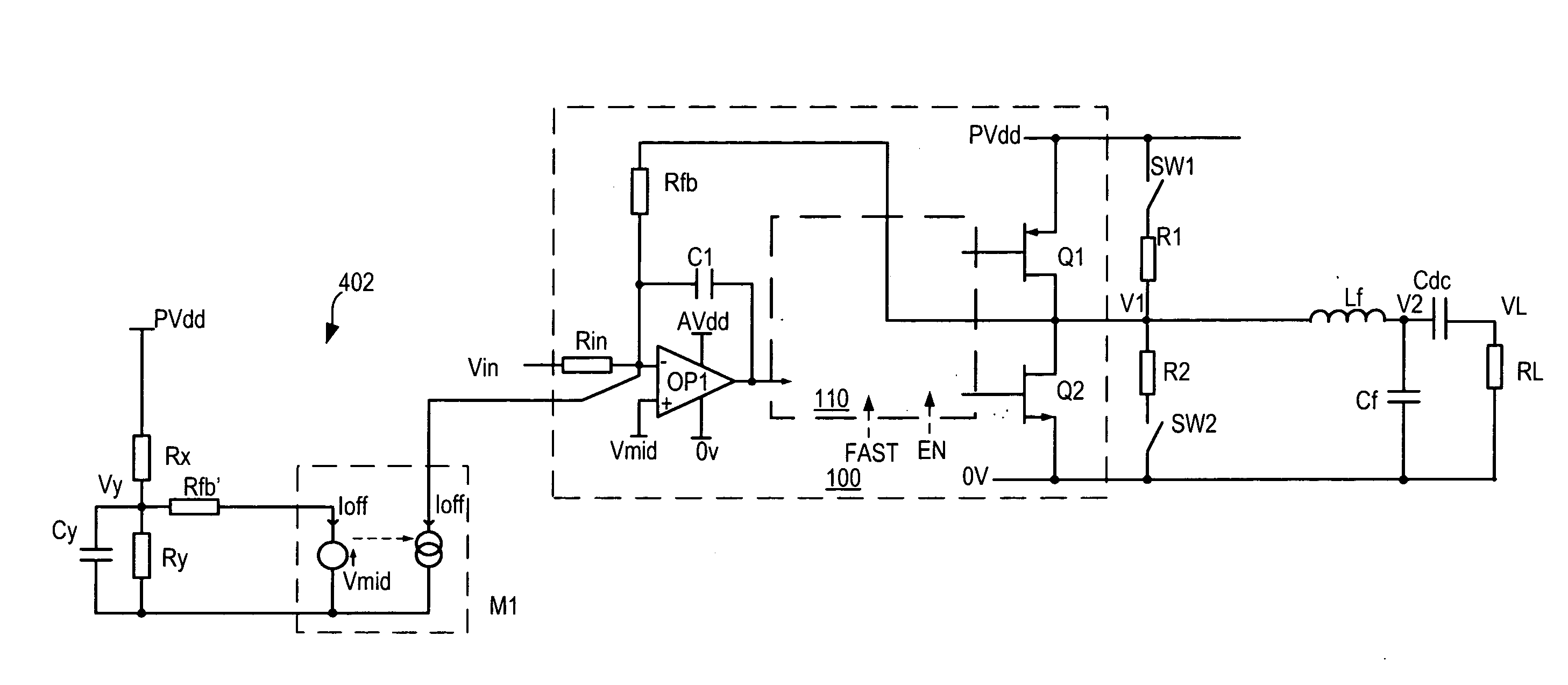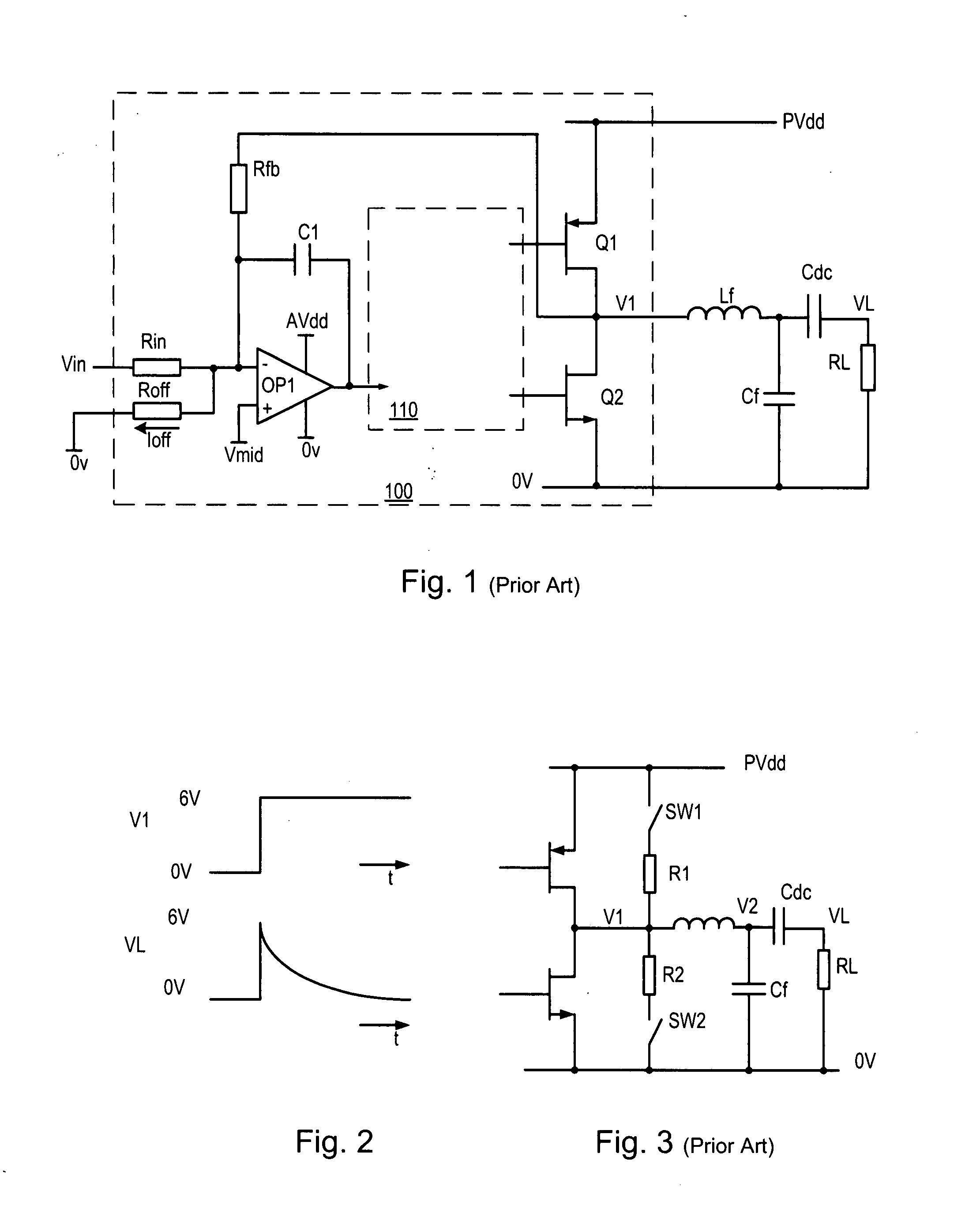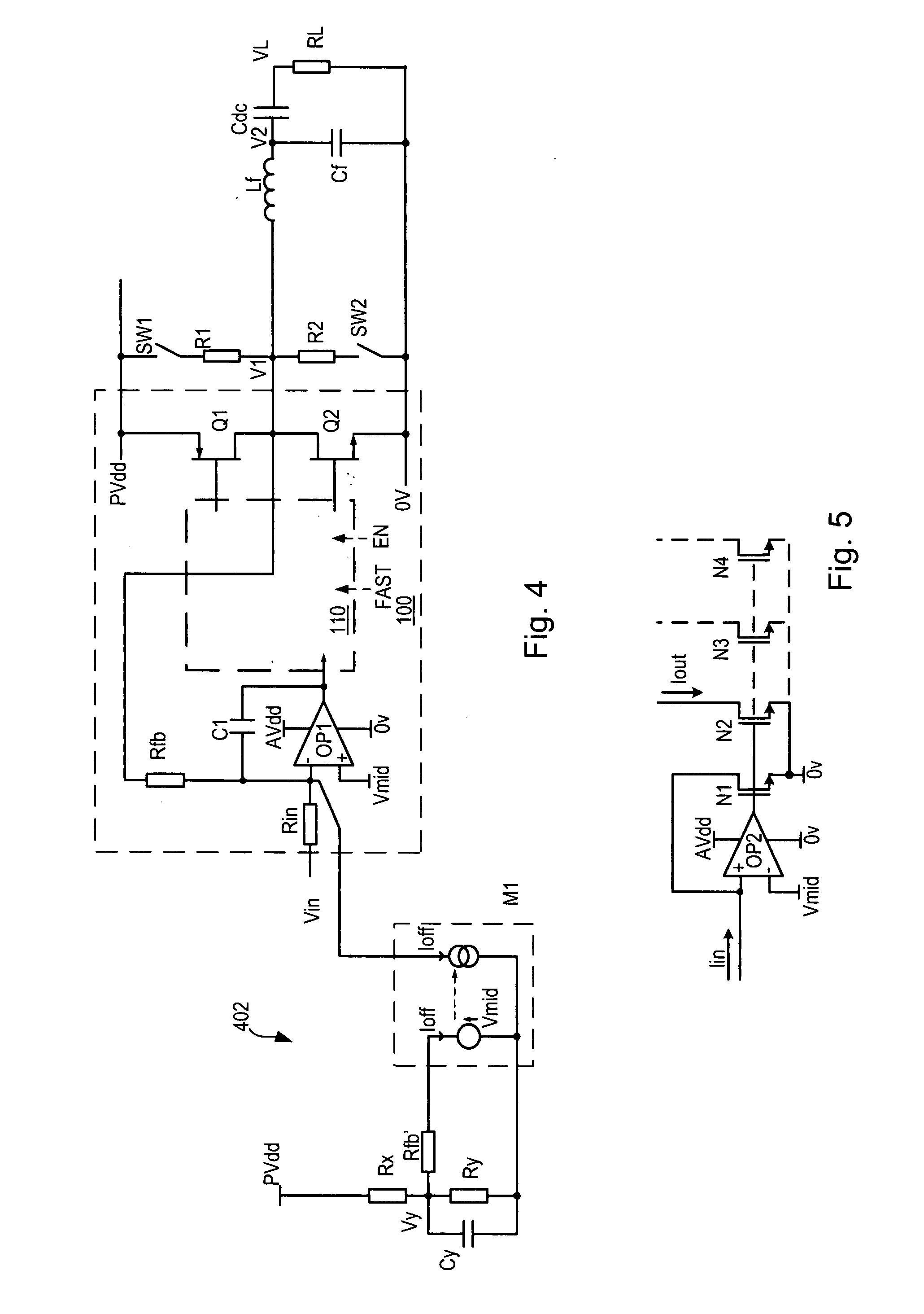Amplifier circuits, methods of starting and stopping amplifier circuits
a technology of amplifier circuits and amplifiers, applied in push-pull amplifiers, phase-splitters, gain control, etc., can solve the problems of high silicon area and associated cost, known measures also do not address a further source of transients, associated startup transients, etc., to achieve accurate matching of components, reduce or eliminate transients or ‘pop’
- Summary
- Abstract
- Description
- Claims
- Application Information
AI Technical Summary
Benefits of technology
Problems solved by technology
Method used
Image
Examples
Embodiment Construction
Background
[0056]FIG. 1 shows a classical analogue-input pulse width modulator or class D amplifier 100. For the sake of example only, it is assumed that this amplifier is for driving a loudspeaker or earphones in an audio application. Other applications of amplifiers (particularly PWM amplifiers) include motor control and many others so that the invention is not at all limited to audio applications. The amplifier 100 has an input stage based around operational amplifier (op-amp) OP1. The amplifier also has a switching output (driver) stage formed by output switches (typically power transistors) Q1 and Q2 which switch a PWM output voltage V1 between power supply rails 0V and PVdd. An output filter Lf, Cf is provided to demodulate the audio signal by filtering off high frequency carrier components. In this example the supply is single-ended and a DC blocking capacitor Cdc is provided in series with the load RL, to pass only the wanted audio signal.
[0057]The input stage op-amp OP1 is c...
PUM
 Login to View More
Login to View More Abstract
Description
Claims
Application Information
 Login to View More
Login to View More - R&D
- Intellectual Property
- Life Sciences
- Materials
- Tech Scout
- Unparalleled Data Quality
- Higher Quality Content
- 60% Fewer Hallucinations
Browse by: Latest US Patents, China's latest patents, Technical Efficacy Thesaurus, Application Domain, Technology Topic, Popular Technical Reports.
© 2025 PatSnap. All rights reserved.Legal|Privacy policy|Modern Slavery Act Transparency Statement|Sitemap|About US| Contact US: help@patsnap.com



